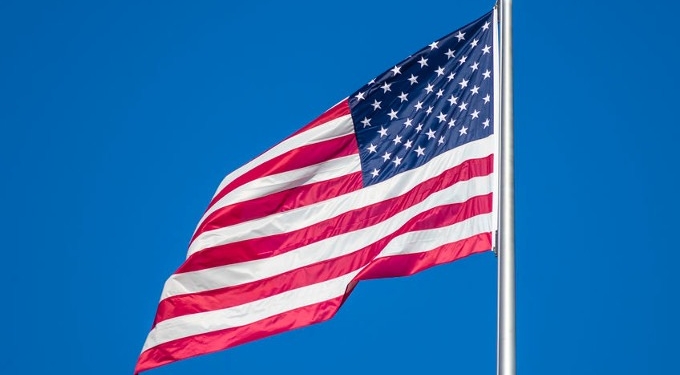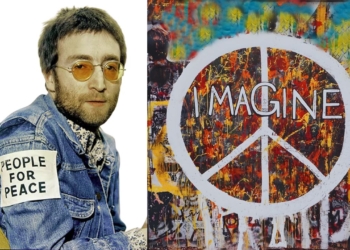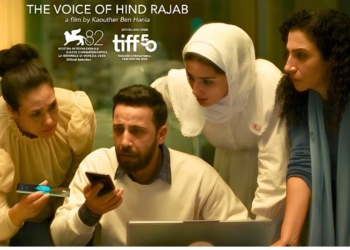
By Jill Suttie | Greater Good Magazine
The United States is facing a pandemic, civil unrest, climate devastation, and a damaged economy, all in the midst of rising social divisions and political polarization. How can we possibly turn things around and work toward a better future together?
In their new book, The Upswing: How America Came Together a Century Ago and How We Can Do It Again, Robert Putnam and Shaylyn Romney Garrett argue that, though the U.S. suffered a similar litany of political, economic, cultural, and social upheaval in the past, Americans were able to come together and form coalitions, creating the right ingredients for change. And, they believe, we can do it again.
Garrett is a social entrepreneur and writer. Her coauthor, the political scientist Robert Putnam, is best known as the author of the 2000 book Bowling Alone, which influentially argued that “social capital”—our network of connections in family and community—was declining in America. I spoke to them about the book, the lessons they extracted from the data, and their thoughts about our future course.
Jill Suttie: In Upswing, you compare what was happening politically, culturally, and economically in the U.S. about 125 years ago to what’s happening today. How are these two eras similar, and how did we get to where we are now?

Robert Putnam: During the Gilded Age, which ran roughly speaking from 1880 to about 1900, there were very high levels of economic inequality, political polarization, social breakdowns (social isolation, social disconnection), and cultural self-centeredness—I would even say narcissism.
But it was succeeded by a period that historians call the Progressive Era, where America began moving in another direction. That change did not happen overnight. On the contrary, it took a long time for that new trend to play itself out. But, over the next roughly 70 years, things got better in every way. We became less unequal, less polarized, more connected with one another, and less socially isolated. Culturally, more and more Americans became convinced that we really are all in this together.
Then, beginning about the late 1960s, all of those upward curves turned exactly the opposite direction. And, for the last 50 years since then, America has been getting more and more polarized, unequal, socially isolated, more and more focused on “I” [on individual well-being]. We call that the “I, We, I” curve. We moved from a period in which we were extremely “I” up to a peak in which we became pretty “we” as a country until it turned on a dime and we became much less connected or “I” again.
The second half of that story is familiar. Everybody paying attention in America knows that we’re now very polarized, unequal, and so on. I wrote a book called Bowling Alone that was focused on the loss-of-social-capital part over the last 50 years, and that’s true enough. But, if you widen your lens and look back at the last 125 years, you get a very different picture. America right now, in 2020, is uncannily like the America of 1900. For people who care about America, there are a lot of lessons to be learned from that time when our country went through the same kind of crisis and came out of it in the right direction.
JS: What was happening after the Gilded Age to make things start trending upward, and how might that be relevant today?

Shaylyn Romney Garrett: It’s important to keep in mind that the Progressive Era was progressive in a different sense than we use that word today. Today, that word is used to describe the left end of the political spectrum. But back then, “progressive” was a banner under which a really diverse, bipartisan coalition of Americans came together. And even though they were so diverse as to be barely coherent, they became unified over a couple of things.
One was a real, compelling desire to reverse this downward trend of our nation and a real galvanizing belief in the power of ordinary citizens to do it. These progressives were unified by this belief that we needed to right the ship, that something had gone fundamentally wrong in America.
So, the Progressive Era was characterized by a moral awakening. It was a time when people were questioning social Darwinism, which was the reigning mindset of the Gilded Age—that the dog-eat-dog, “survival of the fittest” applied not just to the biological world, but to the social-political world. You saw a movement of people coming along to say, you know, there’s something really wrong with this way of viewing the world.
The social Darwinism movement quickly became replaced by the social gospel movement, which was a movement to help us see we’re all in this together and to focus more on our duties to one another. To a large extent, that moral awakening was really directed inward. It wasn’t just pointing at other people and saying, “You’ve caused this problem.” It was reformers asking themselves how they had been complicit in creating the America they were seeing and how they could participate in turning that around.
One of the things we also like to highlight about the Progressive Era is that it was an incredibly youth-driven movement. Some of the most famous people from that era, like Jane Addams or [Theodore] Roosevelt, we tend to think of them in their later years. But when they were doing their most invigorated and innovative work, they were under the age of 30. That mindset, that energy of youth to really reclaim the future of America, was a huge component of what was going on then. And that translated into a vast amount of citizen innovation that created all sorts of new ideas for how we solve our problems.
JS: You write about how different subgroups in American society (like African Americans) experienced upswings, too, but with a different pattern. How is that relevant for making a course correction now?
SRG: As the 19th century ended, the outlook for African Americans was incredibly bleak. Then you saw this upswing in America, in general, where income inequality was decreasing and people were coming together more. But it’s definitely important to say that these progressives were largely racist. They did not include Black Americans within their circle of moral concern. So, the “we” that was created over the course of the first two-thirds of the 20th century in many ways was a white “we.”
When we looked closely at the century-long data, asking how it reflects, or not, the experience of Black Americans, we saw some interesting things. Black Americans were actually moving somewhat steadily toward parity on material well-being with white Americans—things like educational access, health, income distribution, wealth, and both voter registration and voter participation. These are real measures of people’s actual lived experience.
Over this “we” period, things were getting surprisingly better for black Americans—surprisingly, because the reality against which this was happening was Jim Crow, the exclusionary system that was violently enforced. This is a story of Black Americans persisting and, against all odds, standing up to claim their place within the American “we” by, first and foremost, migrating by the millions out of the violent South and into the more hospitable North, then creating their own civic institutions and organizations that created vast stores of social capital in their communities.
Then, America makes this broader turn toward civil rights in the mid-1960s. This watershed change would not have been possible without the building of a wider “we” over the course of the previous six or seven decades—what historians refer to as the long civil rights movement. Sometimes, we think of the civil rights movement as only the decade between Brown v. Board of Education and the passage of civil rights legislation. But actually, this was going on throughout the entire century, the culmination of which was the passage of the legislation.
But, at that moment, America slipped, and there was a massive white backlash against widening the “we” and the implementation of desegregation. White Americans were happy with the civil rights movement in principle—but when it came to actually share the pie, there were a lot of backlashes and stagnation of progress for African Americans.
I think a lot of white Americans don’t really see this reversal of progress for Black Americans. It’s against that backdrop that you see the anger, the frustration, and the sense of being set up that we see in the Black Lives Matter movement today. Taking that history seriously is something that creates a broader coalition of Americans ready to finally make good on this promise of equality that America has not yet figured out how to do.
JS: How do you think experiencing the COVID-19 pandemic right now might be affecting our sense of social solidarity going forward and our ability to turn things around?

RP: That’s an interesting question, but I want to ask the reverse question: What’s the effect of all the things we’ve been talking about on the pandemic? There, the research findings are quite striking. The places that have a lot of social capital and social trust now, and have had them for many years, are the places that are now resisting the epidemic more effectively—and that’s after controlling for lots of other things, like how old the population is, how densely they live together, or how racially diverse they are.
It’s interesting to ask what’s the effect of the pandemic on those factors. But I think it’s even more surprising to say that traditions of social trust and social capital have powerful, real effects right now—even on things like the number of people who are dying.
JS: If we need to form coalitions and increase trust to make a change, do you see any way of doing that when we’re so polarized?
RP: If you look back at the earlier period, as we do for our inspiration, it’s quite striking how the actual issues being addressed then are similar to now. For example, the regulation was a big deal then, and it’s a big deal now—although back then, it was about the oil and railroad barons, and now it’s about the internet or other monopolies. Still, you could look back to that period for actual policy suggestions, like Senator Elizabeth Warren has been explicitly doing.
But our major point is not that we can just borrow the very policy proposals from that period, because, obviously, the world is quite different in some respects. The larger point is that there are some of the strategic lessons from that period that apply very much now.
For example, if you’re trying to make a change in America today, you want to focus your attention on getting the active involvement of young people. Now, they have a lot to be cynical about, and many of them are cynical. But the lesson in our book is not to be cynical. You can make changes, just like people did 125 years ago.
Another lesson is that some people, looking back, think Roosevelt was really important and that maybe we need another charismatic leader like that. But, as we discuss in the book, Teddy Roosevelt was a “lagging indicator”—meaning, he came to the party late. He was important, but most of the really good ideas had come from other people earlier, from the grassroots movements.
I’m trying not to be political here, but it would be a mistake to think that our solution is going to come from some new charismatic leader. It wasn’t true then; it isn’t true now. Instead, the agency is what’s important. The reformers back then did not think of themselves as prisoners of intellectual history; they rejected that idea explicitly and, instead, told themselves that they could make a difference. They avoided pessimism and cynicism, and they really did make a difference.
SRG: I agree with everything that Bob said, but I would also add that the progressives really viewed relationships—getting people physically and socially together—as both an end and a means to what they were trying to do. It was important to combat the loneliness, isolation, and social dislocation that people were experiencing in the Industrial Revolution and still experience today.
We have a lot of young people today who think that the best way to build a movement is through the internet and social media. And, of course, that is a powerful way to bring awareness to issues. But some research shows that those movements built around social media organizing are pretty fragile when it comes to not just tearing down broken systems but building new systems. It’s easy to use Twitter to tear things down that we want to change; it’s not as easy to use Twitter to build something new.
We are going to need to reinvest in face-to-face connections. Bob and I really advocate for using online and social media ties in conjunction with face-to-face, boots-on-the-ground organizing, where people are inactive relationships with one another. This needs to be an important component. Anybody that wants to get involved in building an upswing today needs to get out and get to know their neighbors, to reach across lines of difference, to build relationships. That will be the fuel that pushes this forward.

















